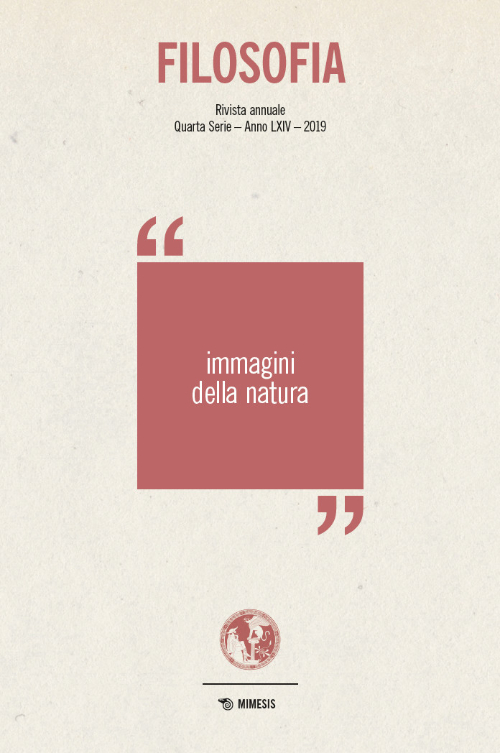Il complotto interiore. Affrontare le nuove forme di alienazione
DOI:
https://doi.org/10.13135/2704-8195/4067Parole chiave:
Castoriadis, conspiracy, autonomy, democracy, politicsAbstract
Il Pendolo di Foucault was published in 1988, and was immediately available in every bookshop. The plot tells the story of an apparent universal conspiracy which then turns out to be only a great misunderstanding. Thirty years later we realize that the phenomenon of good plot for a novel has become more and more widespread, invading fields unimaginable until recent times such as politics and the intellectual community. But what is a conspiracy theory? What kind of people believe in it? How to face this rising phenomenon and its implications? Recent studies on conspiracy theory and the work of Castoriadis suggest an answer to all these questions: revitalizing Democracy and educating people to autonomy.
Downloads
Riferimenti bibliografici
R. Brotherton, Menti sospettose (2015), tr. it. di G. L. Giacone, Torino, Bollati Boringhieri, 2017
C. Castoriadis, Autonime et aliénation (1964), appeared in “Socialisme ou Barbarie”, in Idem, L’institution imaginaire de la société, Paris, Seuil, 1975, pp. 139-157
C. Castoriadis, L’enigma del soggetto. L’immaginario e le istituzioni, materiali a cura di F. Ciaramelli, Bari, Dedalo, 1998, pp. 165-180
C. Castoriadis, Voie sans issue? (1987), in Idem, Le monde morcelé. Les carrefours du Labyrinthe III, Paris, Seuil, 1990, pp. 71-100
F. Dosse, Cornelius Castoriadis: parcours d’un Eros, in “Rives méditerranéennes” 50, (2015), pp. 101-116
U. Eco, Il fascismo eterno, Milano, La nave di Teseo, 2017
M. Fenster, Conspiracy Theories. Secrecy and Power in American Culture, Minneapolis, University of Minnesota Press, 2008, pp. 93-117
S. Freud, Nuova serie di lezioni di Introduzione alla psicanalisi (1933), tr. it. di M. Tonin e E. Sagittario, in Opere di Sigmund Freud, a cura di C. L. Musatti, Torino, Bollati Boringhieri, 1967 e ss., vol XI
R. H. Fritze, Falsi Miti (2009), tr. it. di L. Lencini, Milano, Sironi, 2012
R. Hofstadter, The Paranoid Style in American Politics, in “Harper’s Magazine”, CCXXIX (1374), 1964, pp. 77-86 (https://www.harpers.org/archive/1964/11/the-paranoid-style-in-american-politics)
G. Kanizsa, Subjective Contours, in “Scientific American”, CCXXXIV (1976), n. 4, pp. 48-52
N. Karagiannis, What is to be thought? What is to be done? The polyscopic thought of Kostas Axelos and Cornelius Castoriadis, in “European Journal of Social Theory”, 15 (2012), n. 3, pp. 403-417
B. L. Keeley, Of Conspiracy Theories, in “Journal of Philosophy”, XCVI (1999), n. 3
R. M. Kramer, Paranoid Cognition in Social Systems. Thinking and Acting in the Shad-ow of Doubt, in “Personality and Social Psychology Review”, II (1998), n. 4, pp. 251-275
J. Lacan, Scritti (1966), tr. it. di G. B. Contri, Torino, Einaudi, 1974
D. Pipes, The Hidden Hand. Middle East Fears of Conspiracy, London-New York, St. Martin’s Press, 1996
D. Pipes, Il lato oscuro della Storia. L’ossessione del grande complotto (1997), tr. it. S. Castoldi e M. Passarello, Torino, Lindau, 2018
D. Icke, La guida di David Icke alla cospirazione globale (e come fermarla) (2007), tr. it. di L. Natalia Monti e S. Orrao, E. Bonora, Cesena, Macro, 2009
A. Seitz-Wald, Fairleigh Dickinson poll on conspiracy theories (https://www.scribd.com/document/120815791/Fairleigh-Dickinson-poll-on-conspiracy-theories)
I. S. Straume, The Subject and the World: Educational challenges, in “Educational Philoso-phy and Theory”, 47(2015), n. 13-14, pp. 1465-1476
##submission.downloads##
Pubblicato
Come citare
Fascicolo
Sezione
Licenza
Filosofia applica una licenza Creative Commons Attribution 4.0 International License a tutto il materiale pubblicato.




